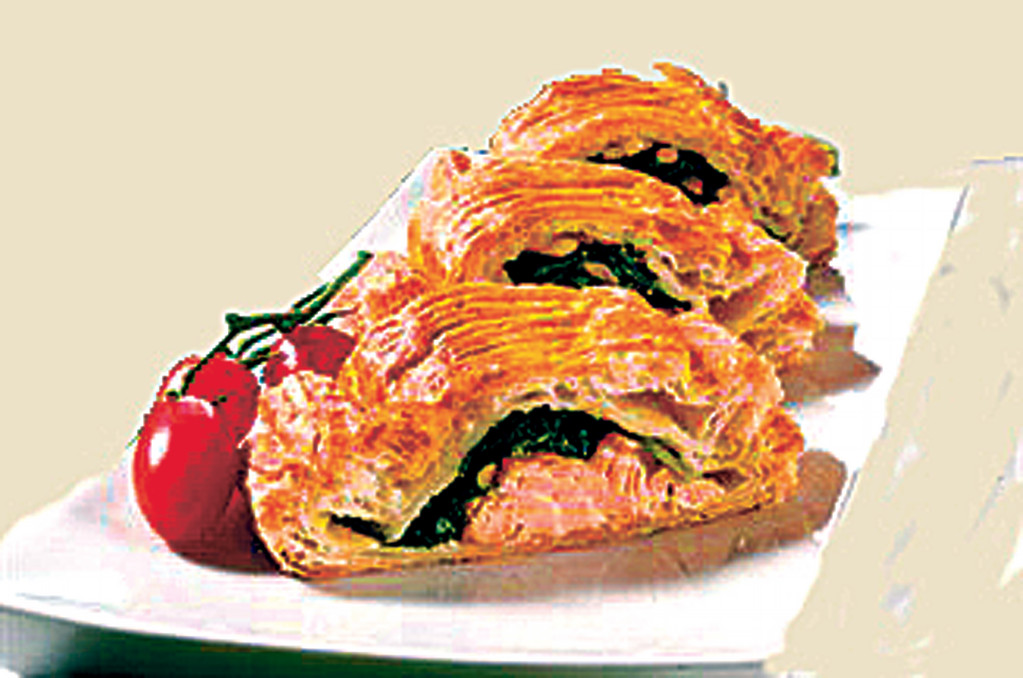Who’s in the kitchen:It’s a wrap!
Seems like yesterday that I wrote about the chocolate cheesecake truffles recipe for Shavuot....oh, wait a minute it was yesterday that I wrote about it. Shavuot falling on a Tuesday, necessitated all columns to be in a week in advance, so that the paper would be published before Yom Tov. I’m more of a last minute, “Judy we need the column, we’re about to go to press” kind of person.
I really do have the best intentions of getting in my column by deadline each week, but I fail miserably and thankfully I have a very kind editor who puts up with me. This week I really did have a good excuse as I fell and broke my ribs. All my wonderful friends called and asked if they could do anything for me, I was so tempted to ask them to write my column, but figured it wasn’t a good idea to hire a ghost writer. So I worked through the pain to bring you a great Shavuot recipe. Next week’s recipe? You guessed it, spare ribs or rib steak……
I actually had a recipe in mind for this week, having gotten it from my good friend Ellen Finkelstein while we were cruising last week. The rare time spent on the ship not eating, we were discussing food. She’s an amazing cook and baker so I decided to pick her brain. It’s a great dairy main course or appetizer that you can try out for Shavuot. It’s a great way to prepare salmon for those bored of the usual baked, poached or grilled versions. It’s salmon, Alouette garlic and herb cheese and spinach wrapped in pastry.
How did the custom of wrapping fish or meat in pastry come about you ask?
Having embarked on my cruise from England, let’s talk about the different types of pastry that are made in Britain that evolved over the last few centuries. They all evolved from a crude flour and water dough mixture invented by the Romans. It was sort of a paste that was wrapped around the main meal before roasting. It wasn’t meant to be eaten, it was just used so that the meat or fish would retain its juices and aromas. It was a tough piece of dough without flavor and was very chewy and hard to eat. As time passed, changes were made to the dough by adding types of fat and milk. By medieval times, dough (crust) known as coffers started to be as important as the fruit, meat or fish it was protecting.
Romans used a variety of meats and fish as filling and a mixture of flour, oil, and water to keep it in. This ‘pastry’ cover was not meant to be eaten and was thrown away.
In combination with the spread of Roman roads, the invading crusaders encountered the dish and brought the recipes to Medieval Europe. In Northern Europe, cooks created the pastry using fats to make stiff dough to hold an upright pie. These medieval pastry dishes were called “coffins” which means a basket or box.
Some historians suggest the tough, almost inedible, crust was given to the servants while the lords and ladies of the house ate the contents.
This pastry became a staple dish in medieval times, and was eventually called “pyes” or “pies.” The French and Italians specialized in redefining the pastry of the pie, making it flakier and tastier by new methods of adding butter, rolling, and folding the dough. Missionaries and explorers spread the meat-based pie dish across the globe. The English Pilgrims of the North American colonies brought the recipes across the ocean with them. The crust of the pie was useful to preserve food during the long winter months in America. But the pie was not considered popular there until the 1800s.
Enjoy this modern version of a fish baked in a pastry, and thanks Ellen, for sharing it with me, so I could share it with my readers.
Chag Sameach and enjoy!
INGREDIENTS
•2 eggs beaten
•¾ container of Aloutte spreadable garlic and herbs flavor
•1/2 of a 17.3-ounce package Pepperidge Farm Puff Pastry Sheets (1 sheet), thawed
•3 6 ounce salmon fillets
•1 10 ounce box of frozen s spinach, defrosted, strained well and lightly sautéed in Pam
•Pam cooking spay
Directions;
1.Heat the oven to 375°F.
2.Unfold the pastry sheet on a lightly floured surface. Lightly roll out the pastry till it becomes about 30% larger but keeping the same rectangular shape
3.Spread the cheese mixture on the pastry to within 1 inch of the edges. Place the salmon fillets, side by side, on the third of the pastry closest to you.
4.Place the sautéed spinach on top of the salmon layer
5.Brush the edges with the egg mixture. Starting at the side closest to you, roll up like a jelly roll. Place seam-side down on the baking sheet. Tuck the ends under to seal. Brush the pastry with the egg mixture. Cut several slits in the pastry top.
6.Bake for 20 minutes or until the pastry is golden brown. Let cool for 5 minutes before serving.

 56.0°,
Overcast
56.0°,
Overcast 







